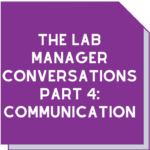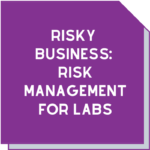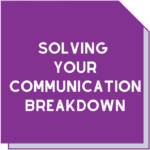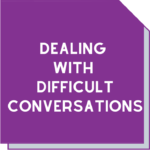There’s a fraction too much friction
 Ever since caveman days we’ve relied on others to ensure positive outcomes. Heading out on your own to grab a mammoth because you felt like a steak would have ended in a swift and probably painful death.
Ever since caveman days we’ve relied on others to ensure positive outcomes. Heading out on your own to grab a mammoth because you felt like a steak would have ended in a swift and probably painful death.
Being on Zoom or Teams meetings means we’ve forgotten all our colleagues’ little quirks. As we’re slowly emerging from lockdown (yay!) and trickling back into workplaces, we’re being reintroduced to those human foibles. Like Dave’s loud chewing. Or Melissa’s leg jiggling when she talks.
Plus, it’s possible that your own endearing habit of whistling through your teeth may not be quite as charming to others. All these little idiosyncrasies in a workplace could lead to a bit of friction. And that’s before we even start talking about work!
Friction can detract from our ability to do our work effectively. So how can we harness the positive and minimise the negative in this new world order? We’ve rounded up some hints about how to do just that.
Hint number 1: Remember how to interact
 With more people returning to a centralised workplace, we may need to re-learn how to interact face-to-face with colleagues.
With more people returning to a centralised workplace, we may need to re-learn how to interact face-to-face with colleagues.
Meeting online doesn’t allow for those casual chats that happen organically or make it easy to interpret body language. That natural flow of brief informal conversations helps people get to know each other and aid connection.
Keep in mind that everyone is having to re-learn these skills – patience really is a virtue in the new world order.
We may also have forgotten how to moderate our approach depending on who we’re speaking to, such as a manager or a member of the leadership team.
If you need to speak to someone in a more senior role about an issue, tie your point to a business issue. Focus on what you’re trying to achieve for the business or for clients. Explain what you believe the impacts will be if the actions that concern you continue.
Keep your language open and use ‘what ifs’ rather than definitive statements. That way if the person you’re speaking to doesn’t react well, you have room to move rather than drawing a firm line.
And if you’re approaching your manager, consider your timing. If they’re under pressure, they’re less likely to be open to your suggestions.
Hint number 2: Conflict isn’t always a bad thing
Conflict in the workplace is inevitable. There are issues around allocation of tasks, possibilities for promotion and the general to and fro of dealing with other humans.
In fact, healthy conflict can be positive. Good business outcomes, strengthening team trust and personal pride are all good reasons for conflict. Workplaces can’t be uniformly happy. It’s not only an impossibility to have a completely harmonious workforce, but also a danger to business growth and innovation.
By creating a conflict averse work environment, businesses lose those people who feel safe to express their opinions or speak up if they spot risks in plans or assumptions.
The last thing you want is people who sit in their silos, nodding along in time to keep the peace. Friction helps us to develop alternative solutions and escape this ‘Groupthink’.
Hint number 3: Consider other people’s motivations
It’s true that watching two people in a meeting with opposing views can feel awkward for others. But these tensions shouldn’t be viewed as two ends of a rope in an all-out tug of war.
Instead, view them as part of the business puzzle and seek options that will solve it, keeping the overall goal of the business in mind.
If we normalise healthy and robust discussions, then we’re much less likely to become defensive and much more likely to have productive outcomes.
Instead of producing friction that drags productivity down, teams should be made feel safe and able to express their opinions in discussion groups. Plus, we need to focus on the primary end goal – the good of the business.
Hint number 4: It’s ok to show some emotion
 We’ve all had those times when, despite everything, we feel ourselves getting emotional about an issue. That’s normal. It’s human. And the worst option is to rush from the room, scattering tears and tissues in your wake.
We’ve all had those times when, despite everything, we feel ourselves getting emotional about an issue. That’s normal. It’s human. And the worst option is to rush from the room, scattering tears and tissues in your wake.
We tend to back away from situations that we think will raise emotions. We don’t believe displaying emotions in a workplace is appropriate. And in certain cases, of course that’s true – there’s no place for lashing out in anger or threatening violence at work.
However, if you feel yourself getting emotional, don’t feel as though you must leave the room. Even if you get teary, you could say “I’m feeling emotional because this really matters to me”, or “You can see how invested I am in this issue”. The risk of emotion is no reason to avoid a conflict or raise something important.
An organisation that has fostered an environment encouraging collaboration and ‘productive friction’ would have created a safe space for emotions.
In this environment, passion for your project should be the norm, not the exception.
Hint number 5: Have the difficult conversation
The thought of having to speak to that colleague about their disturbing personal habits or their practice of regularly talking over you in meetings probably makes you cringe. But putting up with low grade stressors is bad for you, for morale and in the long term, for the business.
If you really don’t have the words for difficult conversations, books such as Alison Green’s excellent Ask a Manager will give you some examples of how to express your concerns.
There are some steps you can take to communicate and manage conflicts with others. This includes asking yourself what it is about your colleague that bothers you; meeting with the person and communicating clearly and honestly with them about the issues; listening respectfully and without judgement and seeking a compromise.
If you don’t feel comfortable meeting with them one on one, a trusted colleague could be asked to moderate.
However, it may simply be that despite best efforts, there is a co-worker that you can’t deal with. If this is affecting your work performance or your mental health, it’s important to escalate this through whatever the process is in your organisation.
Final thoughts
Productive friction means bringing together different perspectives, respectfully challenging other team members in their thinking and producing excellent business outcomes. This is an important part of completing activities involving problem-solving and critical thinking. Such as in management review, method development and working through a nonconformance.
The key is for managers to eliminate unproductive friction and foster trust within their teams or workgroups. By encouraging contribution to business solutions, businesses can retain talented staff members and attract new ones.
Does your business encourage productive friction?
Or is it geared more towards everyone fitting in and getting along?
We’d love to hear your thoughts! Email info@masmanagementsystems.com.au and let us know where your business fits on the friction scale.
Plus, if you’d like to be first in line to get our new ebook on Communication, be sure you’re signed up for our weekly email!
Download the Fraction too much friction article






